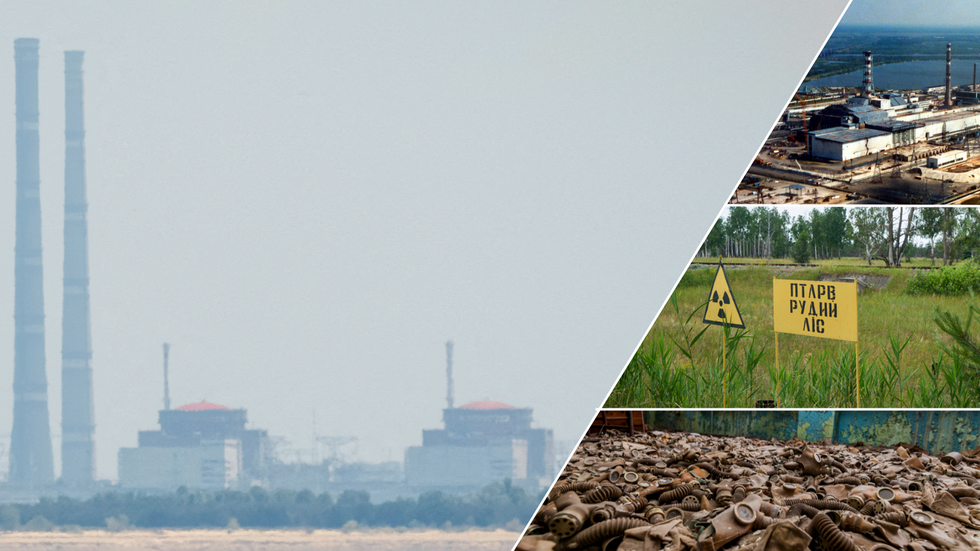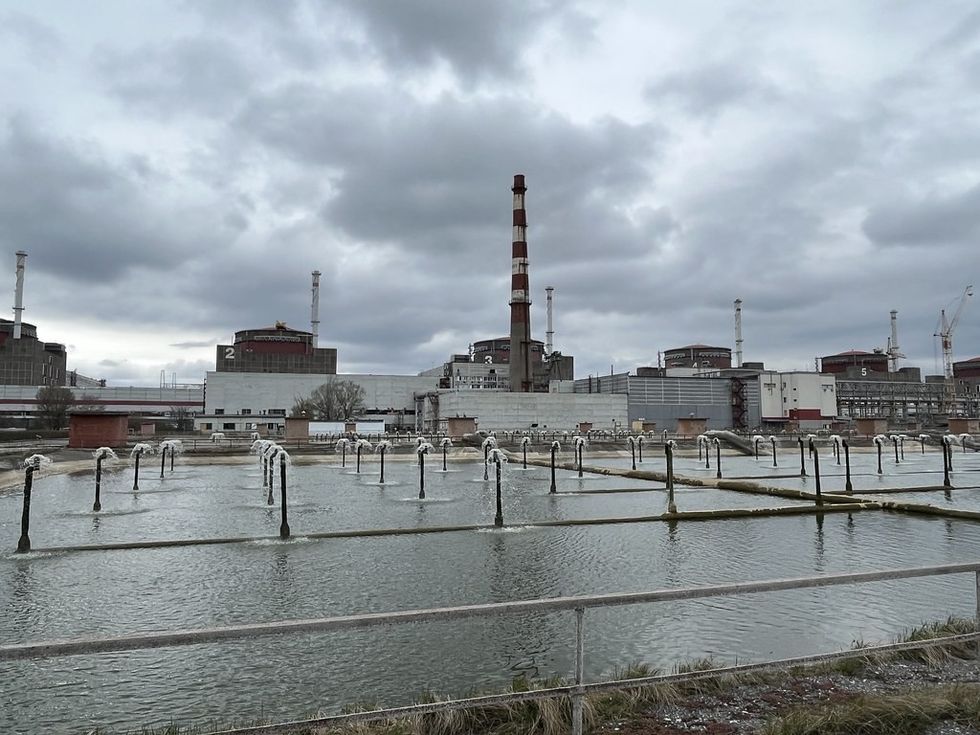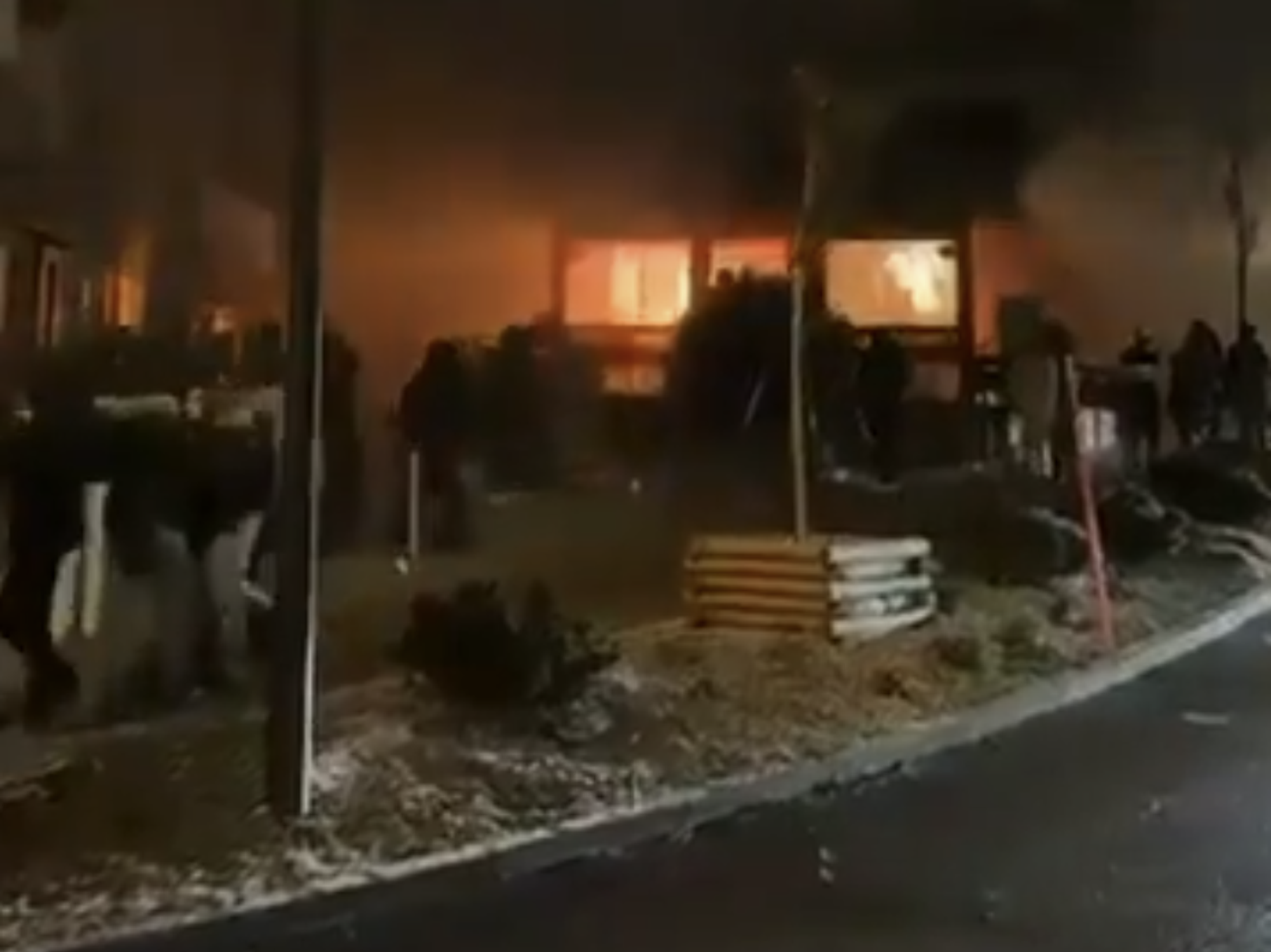Ukraine's largest nuclear power plant suffers power supply glitch that could lead to Chernobyl-like catastrophe with 'significant radioactive pollution across Europe'

The main power line at Russian-occupied Zaporizhzhia NPP was down for three hours due to a short circuit
Don't Miss
Most Read
A power supply glitch at Ukraine’s largest nuclear power plant could have resulted in “significant radioactive pollution in Europe and Russia”, similar to Chernobyl, a nuclear expert has warned.
The main power line at Zaporizhzhia NPP (ZNPP), which is currently being occupied by the Russians, was down for more than three hours due to a reported short circuit.
The International Atomic Energy (IAEA) said that the power outage “underlines extremely precarious nuclear safety and security” at the plant. Yet the Russian government stressed that there was no threat to safety as NZPP was being supplied via a backup line.
However, DR Paul Dorfman, Chair of the Nuclear Consulting Group, told GB News that today’s incident could indeed have had grave safety repercussions - focusing specifically on its impact on the west - and likened it to the 1986 disaster in Pripyat.

A power supply glitch at Ukraine's largest nuclear power plant could have resulted in “significant radioactive pollution in Europe and Russia”, similar to Chernobyl
|Reuters/Getty/Flickr
“As we found with Chernobyl, nuclear radioactive pollution doesn't respect international boundaries,” he said.
“Depending on the extent of the accident/incident and the wind direction, we could see significant radioactive pollution in Europe and Russia.”
He said that the loss of power to reactors could “cause the core to go critical and/or result in a loss of the coolant that removes heat from it - in other words meltdown”.
Russian officials said on the Telegram app that the reasons for the outage were being investigated. They stressed that no change in radiation levels occurred during the supply shortage.
LATEST DEVELOPMENTS:

Dr Paul Dorfman spoke to GB News about the dangers of a possible power outage
|X
Reporting the incident, IAEA, said: “Ukraine ZNPP lost connection to its sole remaining 750kV off-site power line this afternoon due to a reported short circuit, leaving it reliant on single backup line, DG Grossi said. A power cut again underlines extremely precarious nuclear safety & security at ZNPP during conflict.”
Dorfman, a professor at Sussex University, said that a power outage could have a devastating impact on all aspects of Ukrainian society.
“The risk to people and the environment as a result of a major accident or incident at Zap is very significant - triggering serious environmental, human health, economic, military and political consequences.”
Dorfman also explained the dangers of a plant losing power, which in extreme cases, could result in a hydrogen explosion, such as in Fukushima in 2011.
He said: “Nuclear reactors need constant cooling to avoid nuclear meltdown. This involves pumping cold water into the reactor circuitry, then removing the heated water. If power is lost, the pumps stop operating, water circulation stops, and the reactor core fuel melts.

Russian officials said on the Telegram app that the reasons for the outage were being investigated
|Flickr
“This constant supply of coolant is needed even when reactors are in cold shutdown. Also, due to radiolysis of the water in the reactor, hydrogen is produced and must be removed via turbines which need a constant supply of power.
“If these turbines stop operating, gas build-up leads to a hydrogen explosion, as seen at Fukushima.”
Russian reports state that the 750 kilovolt (kV) “Dniprovska” power line went down at 1.31pm local time (10.31am GMT), where it was then supplied by the backup “Ferosplavnaya” line.
Later reports said that the Dniprovska line was restored at 4.49 pm local time (1.49pm GMT).
The disaster in Chornobyl in 1986 at the local nuclear power plant resulted in radioactive energy covering much of the surrounding area.
It is considered the worst nuclear disaster in history both in cost and casualties. It is one of only two nuclear energy accidents rated at seven—the maximum severity—on the International Nuclear Event Scale.











